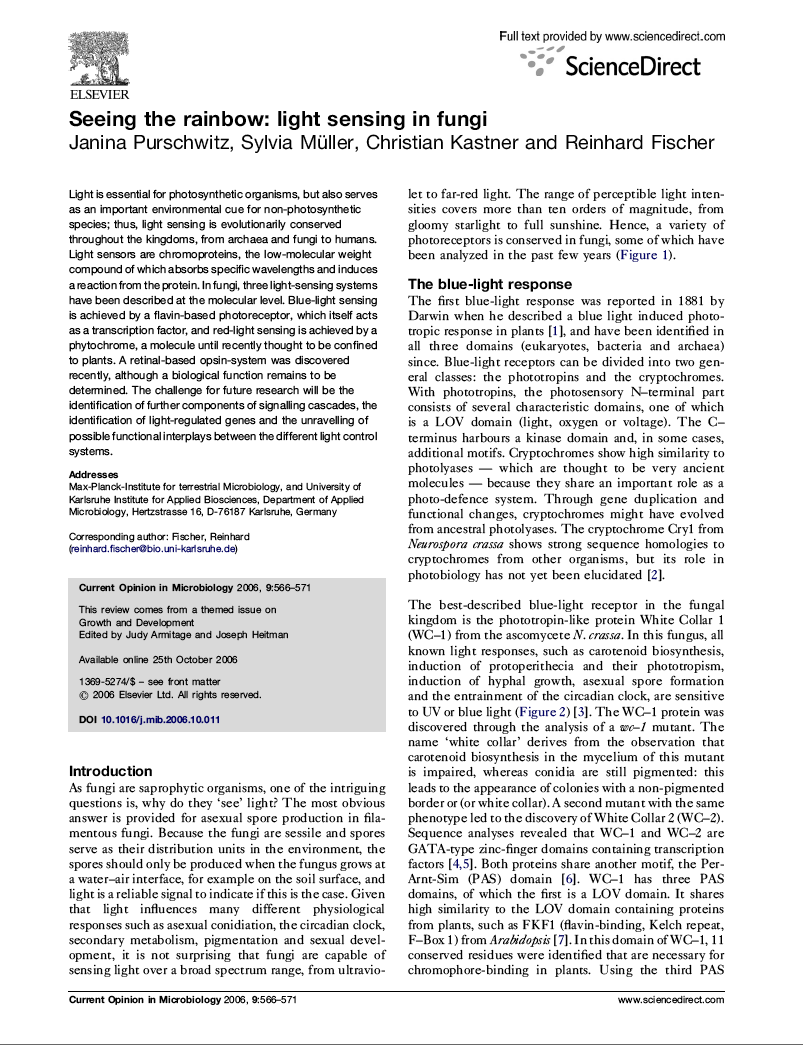Purschwitz et al. 2006
Seeing the rainbow - light sensing in fungi. Curr. Opin. Microbiol., 9:566-571.
Purschwitz, J., Müller, S., Kastner, C. & Fischer, R.
Abstract
Light is essential for photosynthetic organisms, but also serves as an important environmental cue for non-photosynthetic species; thus, light sensing is evolutionarily conserved throughout the kingdoms, from archaea and fungi to humans. Light sensors are chromoproteins, the low-molecular weight compound of which absorbs specific wavelengths and induces a reaction from the protein. In fungi, three light-sensing systems have been described at the molecular level. Blue-light sensing is achieved by a flavin-based photoreceptor, which itself acts as a transcription factor, and red-light sensing is achieved by a phytochrome, a molecule until recently thought to be confined to plants. A retinal-based opsin-system was discovered recently, although a biological function remains to be determined. The challenge for future research will be the identification of further components of signalling cascades, the identification of light-regulated genes and the unravelling of possible functional interplays between the different light control systems.

